Spain has always been situated with an ideal location and local climate for growing quality wines. Most wine connoisseurs have heard of at least one great Tempranillo, for instance. But you may not yet be aware of how intricate each Spanish wine variety is and how vastly different each variety tastes.
But where do the Spanish wines on the international wine market come from? What unique characteristics does Spanish wine production offer us?
In this guide, we will go over all of the significant Spanish wine varieties. If you love wine but don’t know where to start, read on about Spain's wine producing regions. Then you can get started with the right Spanish wine bottle.
Spanish Wine Overview
Spanish wine varieties are unique thanks to the unique characteristics of the Spanish wine regions. You can expect very different taste profiles and other features.

How Many Wine Regions in Spain?
Spanish wines are grown in 7 main wine regions. These regions are spread throughout all of Spain, adding to the versatility and complexity of the Spanish wine industry.
To get the most out of your Spanish wine journey, it’s best to visit the local Spanish vineyards. But if that’s not possible, we hope we can walk you through the Spanish wine regions and their vineyards in as much detail as possible. Specifically, we will go over how each area affects the overall flavor profile of each wine. Then, you can decide which Spanish wines will suit your personal tastes.
pproach deciding which one is best for you.
Spanish Wine Regions
Each of the seven major Spanish wine regions infuses its own unique attributes into their wines. Depending on your taste preference and ideal wine profile, there are several different types of Spanish wine that you can choose from.
Somehow, Spain seems to fly under the radar compared to its next-door neighbor, France. But Spain is a very ecologically diverse country, so it helps to get a lay of the land. This Spanish wine regions map helps to put into context the various kinds of wines that grow throughout the country.
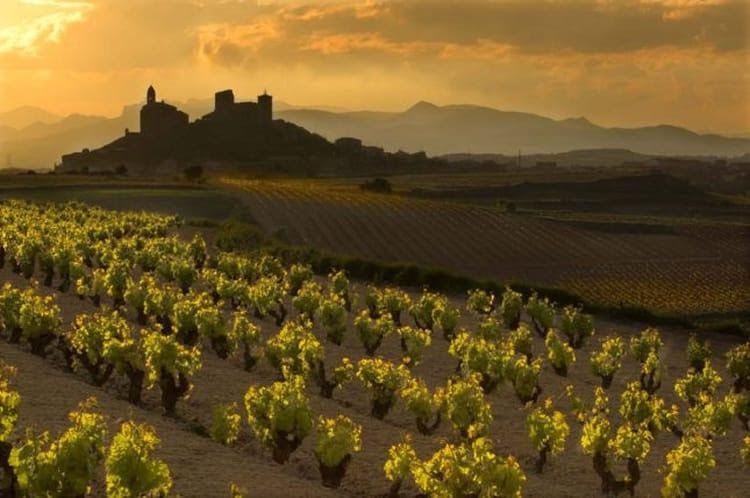
Fun fact: Spain is actually the third-largest wine producer in the world. It also has the most land dedicated to vineyards–over a million acres. Spanish wines range from great value wines to highly prestigious wines, such as Alvaro Palacios’ L’Ermita and Vega Sicilia’s Unico.
Mediterranean Coast
The Spanish Mediterranean coast is a very diverse area containing the sub-regions of:
- Valencia
- Catalonia
- Murcia
Catalan Wine
The Catalonia region is itself a major wine region. Catalonia itself can be broken into ten wine regions containing a wealth of the so-called Mediterranean wine varieties. But Catalonia is primarily known for Cava (Spanish sparkling wine) and a highly acclaimed red wine sub-zone, Priorat.
Valencia & Murcia
Valencia and Murcia are warmer growing regions that produce a bulk of value wines from deep red Monastrell to aromatic white Malvasia and the wide diver flavor profiles.
"Green” Northwest Spain
Galicia, very unlike the rest of Spain, is where lush green valleys are
plentiful and the common cuisine includes lots of fresh fish. Albariño is
the champion grape of the sub-region called Rias Baixas (REE-us BYE-shus),
which skirts the coast. The area specializes in zesty white wines and a few
aromatic red wines made with Mencía (men-THI-yah).

Duero River Valley
The Duero River is the same river as the Douro in Portugal
. This region is notable for:
- Minerally white wine
- Verdejo
- Rueda
- The bold red wines of Toro, Ribera del Duero, and Leon
The wine grape of the Duero River Valley is
Tempranillo
. In Toro, it’s called Tinta de Toro, where it’s considered to be a slight mutation of the Tempranillo grape. Ribera del Duero is home to one of the most famous wineries in Spain: Vega Sicilia.
Ebro River Valley
The subregions of
La Rioja
and Navarra are found in the Ebro River Valley. Here, Tempranillo is king
and long-standing bodegas such as Lopez de Heredia and Marques de Murrieta
make age-worthy wines.
Navarra is known mostly for Rosado (rosé) wine made
with the grape Garnacha (aka Grenache). The region also produces oak-aged
white wines of Viura (Macabeo). In Basque country, zesty white wines called
Txakoli (“CHAK-o-li” ) are common.
Andalucía
Andalucía is a very hot and dry region famous for Sherry.
Stark white albariza soil makes Palomino Vineyards in Cádiz look like a
moonscape. The even hotter, Montilla-Moriles produces fortified dessert
wines that are called “PX“. An aged PX, such as those from Bodegas Toro
Abala, have similar nutty-date flavors like Tawny Port.

Central Plateau
The central plateau or Meseta Central is the inner plateau of Spain which
is home to the capital city, Madrid. The area has an average elevation of
2,300-2,600 feet and is dry and sunny. Because of its climate
characteristics, vines are spaced very far apart and close to the ground.
Some of the best value red wines of Spain can be found here made of
Garnacha, Tempranillo, and even the rare, Petit Verdot.
The Canary Islands & All Other Islands
The Islands of Spain offer a wide range of wines from Listen Negro-based
reds to dessert wines made with Moscatel.
The volcanic soils of the Canary Islands add a gritty taste of rustic minerality. Currently, there are very few exporters of the limited wines of the Islands of Spain. However, you can find a few from places like Tenerife.
La Rioja (Rioja)
Without a doubt, Rioja is Spain’s most famous wine-growing region. People have been growing wine grapes there since the 2nd century BC. Rioja red wines are now some of the most famous wines.
Rioja wines are based on the Tempranillo grape variety. But they are usually blended with Garnacha, Graciano, and Mazuelo, along with a few others. Rioja is divided into three distinct growing regions:
- Rioja Alta, the coolest of the three and makes the finest wines,
- Rioja Alavesa, just southeast of Alta makes wines of high tannin and structure
- Rioja Baja, the warmest of the three, makes simple, everyday drinking wines
Find the Best Rioja Wines here!
Castilla y Leon (Ribera del Duero DO)
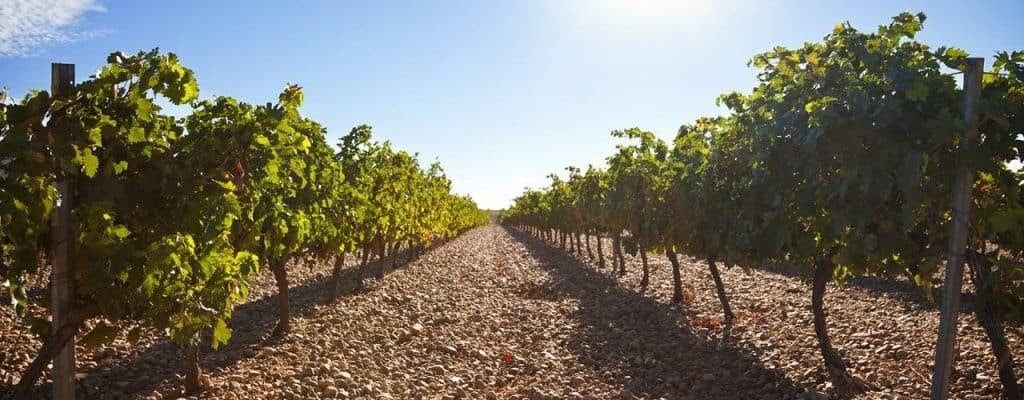
This is one of the most famous and most respected regions in Spain. It is
home to Spain’s most famous winery Vega Sicilia and its wines are based on
Spain’s most famous grape, Tempranillo (at least 75% of the wine must be
comprised of Tempranillo).
Catalonia (Priorat)
Priorat has seen a great resurgence in production over the last decade. For
a long time, many of these extremely steep slopes had been abandoned
because they were too difficult, dangerous, and expensive to maintain and
work. They are home to some of the oldest vines in Europe, however.
The black schist and quartz soil (known locally as llicorella) are
resistant to the vine disease phylloxera, so these vines were spared when
the pest ravaged the vineyards of Europe. Made from mainly Garnacha and
Cariñena with the possible additions of Monastrell, Cabernet Sauvignon, and
others. Look for these wines to be among the best Grenache-based wines in
the world.
Cantabrian Mountains
The regions of northern Spain where the Cantabrian Mountains are situationed are home to:
- Hondarrabi Zuri
- Hondarrabi Belza
- Alfrocheiro Preto
- Cabernet Sauvignon
- Merlot
- Picapol
Castilla-La Mancha (Toro DO)
This region has seen rapid growth as of late. After becoming a DO in 1987,
this region had four wineries established here.
After leaks revealed that
the famed estate of Vega Sicilia had been quietly purchasing land in Toro
under an assumed name starting in 1997, this region exploded in growth! Now
there are around 40 wineries making wine here. The Tempranillo, Malvasia,
and Garnacha grapes tend to be dominant in the region.
Castilla y Leon (Rueda DO)
This tiny little DO between Ribera del Duero and Portugal is a region where
white wine flourishes. It used to be known mainly for fortified wines, but
now it is most famous for its light, dry wines made from Verdejo. You will
often see a little
Sauvignon Blanc
blended in as well.
Galicia (Valdeorras DO)
This DO rivals Rías Baixas as the best white wine in the northwest of
Spain. Made predominantly from Godello, the wines are fresh, light, clean,
crisp, and very refreshing. The influence from the Atlantic Ocean can
almost lend a saline-like quality to the wines.
Cava (Pais Vasco/ Catalonia / Aragon / Valencia / Extremadura /
Navarra/ La Roja )
Cava is one of the oldest sparkling wine appellations in Europe. It is
always made by the Traditional Method or Champagne
Method, which stipulates that the second fermentation (creation the
carbonation), always takes place in the bottle. Cava is not actually one
region but a patchwork of regions with defined borders throughout the
country that are approved to make it.
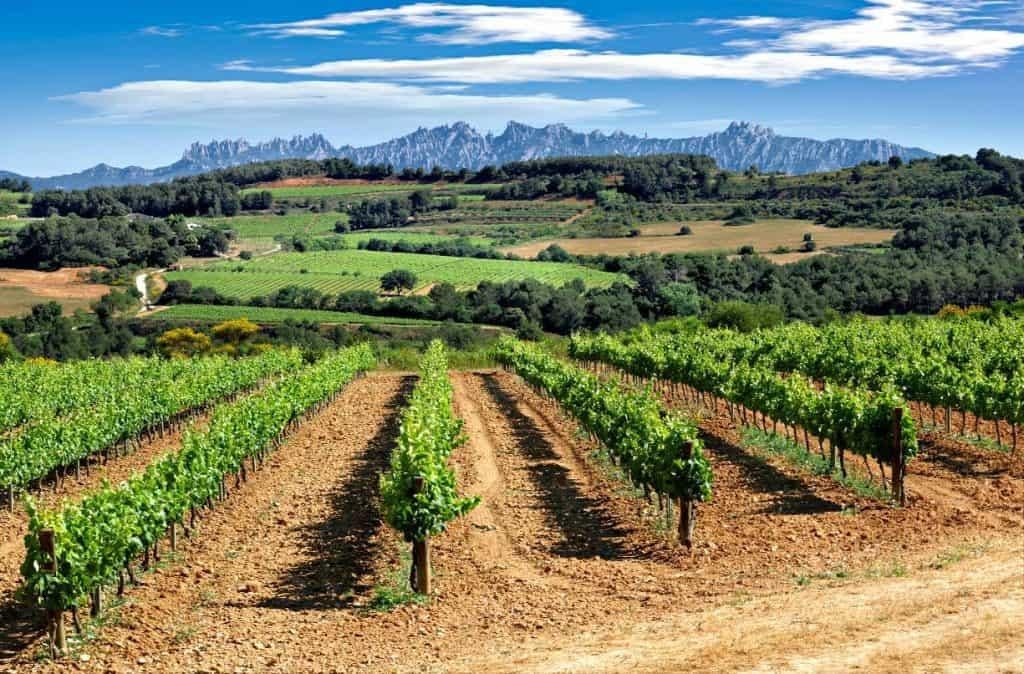
The allowable white grapes are mainly Xarel-lo, Macabeo (aka Viura), and
Parraleda, though
Chardonnay
and Malvasia may also be used. The allowable red grapes are
Pinot Noir,
Garnacha, Monastrell, and Trepat. Trepat may only be used in the
production of Rosé.
Galicia (Rias Baixas DO)
Most known for its whites made from the Albariño grape. This DO sit right
on the border to Portugal along the Atlantic coast. Its wines are lively,
spicy, and highly acidic with tropical fruit flavors.
Madrid
Located in central Spain, Madrid is not very well-known as a wine-producing region. Despite this, excellent wines are produced locally.
Old small wineries have found new inspiration in old Grenache vines. New modern producers have brought innovation to this city.
Barcelona
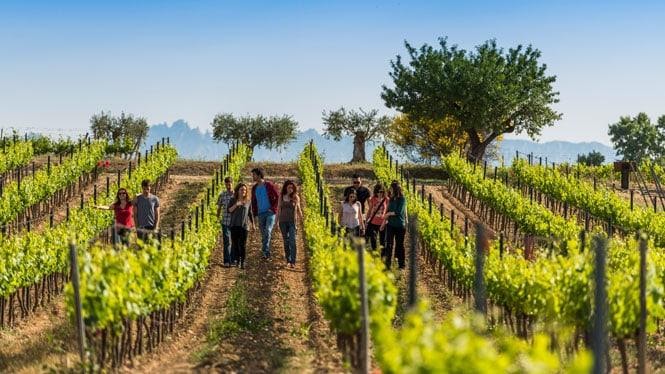
Barcelona is famous for the production of cava wine (Spain´s equivalent to Champagne) but
there are also many wineries that produce high still wines.
Malaga
There are two different ways of making wine in Malaga. The Denomination of
origin Malaga specializes in sweet wines from the Pedro Ximenez and
Moscatel grape varieties. It covers an area close to the sea.
Jerez de la Frontera
Jerez de la Frontera and Marco de Jerez has a collection of wineries that
are true monuments to wine. The word ´Jerez´ means ´ sherry´ in
Spanish, meaning that the name of this wine region reflects its best
produce. Jerez makes wines that are unique to the world: vino fino,
amontillado, oloroso.
You will not find other wines that have been elaborated by the same art or
taste the same as sherry. One of the best ways to learn about these
wonderful wines is to join a guided Sherry wine tour. The Puerto de
Santamaría, San Lucar, and Jerez´s interesting history: wine tourism
perfect for a relaxing holiday break.
These are the primary regions in which many popular Spanish wine varieties
are grown and cultivated. Spain has over 60 different regions in which wine
grapes are grown and fermented in order to create the delicious tasting
products that we all know and consume.
Regardless of what region your desired wine is grown in, they all have one
thing in common, it takes time to create wine.
In next section we will give you detailed information about the aging process involved with various types of wine products. With that, we hope that you can make an even more informed decision for your first bottle of Spanish wine.
Aging Spanish Wine: Requirements for different varieties
Certain terms on labels of Spanish wine carry legal definitions as to how
old they are before being released and how they were aged. They can be
clues to the quality of the wine in the bottle as well. Here are some of
the more common ones you will encounter.
Crianza
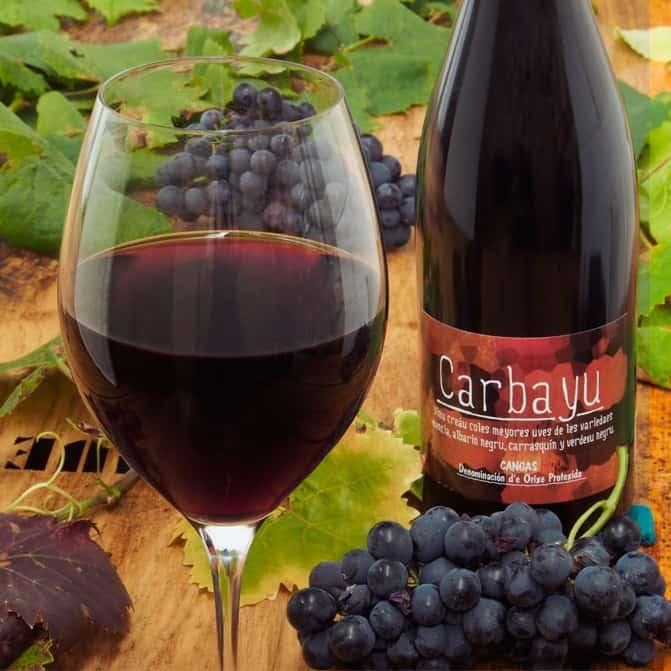
-
White & Rosado (Rosé): Wine must be 1 year old and spent at
least 6 months in wood.
-
Red: Wine must be 1 year old and spent at least 6 months in wood.
In Rioja, Ribera del Duero and Navarra it must be at least 2 years
old and spent a minimum of 1 year in wood.
Reserva
-
White & Rosado ( Rosé):
Wine must be 2 years old and spent at least 6 months in wood.
-
Red: Wine must be 3 years old and spent at least 1 year in wood.
-
Cava: Wine must spend a minimum of 15 months on the lees.
Gran Reserva
-
White & Rosado (Rosé): Wine must be 4 years old and spent at
least 6 months in wood.
-
Red: Wine must be 5 years old and spent at least 18 months in wood.
In Rioja, Ribera del Duero and Navarra, it must be5 years old with
a minimum of 2 years in wood and a minimum of 3 years in bottle.
-
Cava: Wines must spend a minimum of 30 months on the lees.
Another critical element in any Spanish is the type of grapes used during the fermentation process. There are several types of grapes used in the creation of Spanish wines.
Spanish Wine: The types of Grapes Used
Most people around the world would not necessarily recognize these names but they are the main force of traditional Spanish wine.

Grape names are not used much in Spain. In most restaurants or wine shops, wines are classified according to their origin. Spanish wine regulations limit regions, which means that in order to understand how a wine will be you should know something about that particular region! More and more producers do however include the name of the grape in their labels.
Spanish Red Wine Grape Varieties
We will list here the most important and common Spanish grape varietals.
Tempranillo
Tempranillo is Spain's premier red wine grape, celebrated for its early ripening—hence its name derived from "temprano," meaning "early" in Spanish. This grape is pivotal to the country's winemaking, known regionally as Tinto Fino in Ribera del Duero, Cencibel in La Mancha, and Ull de Llebre in Catalonia.
Primarily flourishing in La Rioja, Tempranillo is the cornerstone of iconic Spanish wines, notably Rioja and Ribera del Duero. This versatile grape variety excels in producing vibrant, fruity young red wines that gain depth and complexity from oak aging. As the most widespread grape in Spain, Tempranillo is essential to understanding the diversity and richness of Spanish wine varieties.
Different regions have different names for Tempranillo. It is also known as:
- Tinta del Pais
- Cencinbel
- Ull de Llebre
- Tinto Fino
- Tinto del Toro
- Others
It makes wines of structure and age-worthiness that have aromas of dried red currant, and red cherry with notes of smoke, cedar, and leather.
Originating from Spain, this grape variety, widely recognized as Grenache, is often associated with the Rhône Valley in France. However, its Spanish roots are deep, particularly in the northeastern regions of La Rioja, Navarra, Aragón, and Cataluña. In Rioja, it is commonly blended with Tempranillo to create some of the area’s signature wines.
Grenache is celebrated for producing fruity wines with distinctive raspberry aromas. This thin-skinned grape thrives in various wine-producing countries worldwide, but it holds a special place in the heart of Spanish viticulture. In Spain, Grenache not only forms the backbone of the renowned wines from Priorat but is also a key component in blends used for Rioja wines and in the production of Cava, the sparkling wine of Spain.
This variety is known for yielding wines that offer a palate of dried red fruit flavors alongside herbal and spicy notes, contributing to the complex profile of many celebrated Spanish wines.
Bobal
Bobal, a grape variety predominantly grown in Valencia, Spain, is renowned for producing full-bodied and richly colored wines. Over recent years, the wine production quality of Bobal wines has significantly improved, highlighting this variety's potential in the Spanish wine scene. As Spanish wine enthusiasts seek out diverse and quality varieties, Bobal has gained recognition for its robust flavors and contribution to the regional wine offerings of Valencia.
Cabernet Sauvignon
Indeed, Cabernet Sauvignon is not native to Spain, but its adaptability and the increasing demand for varietal wines in import markets have led to its broad cultivation throughout the country. Cabernet Sauvignon flourishes in a variety of Spanish regions, yielding excellent results due to its ability to thrive in diverse climates. This grape's tannic nature makes it a popular choice for blending with other varieties, creating more complex and layered wines. Discover Cabernet Sauvignon from various Spanish wine regions, including:
- La Mancha
- Catalonia
- Navarra
-
- Others
The integration of Cabernet Sauvignon has diversified the Spanish wine portfolio, introducing an international dimension to Spain's traditional viticulture practices.
Monastrell
Monastrell, the signature grape of Murcia and southern Valencia, is renowned for producing robust Spanish wines with exceptional structure and a higher-than-average alcohol content. This variety has historically been very popular in Anglo-Saxon countries, where its powerful profile and intense flavors have been highly appreciated. The Monastrell grape contributes significantly to the diversity and richness of Spanish wine varieties, offering a unique taste experience that stands out in the global wine market.

Merlot, primarily known as a French grape variety, has also found a successful foothold in Spain, albeit to a slightly lesser extent than Cabernet Sauvignon. This versatile grape is cultivated in various Spanish wine regions, contributing to the country's diverse array of wine varieties. Merlot's adaptability allows it to thrive across Spain, where it is appreciated for its smooth texture and rich flavors, enhancing the Spanish wine portfolio and appealing to a broad audience of wine enthusiasts.
Syrah, particularly popular in La Mancha and Mediterranean areas of Spain, offers a distinct style compared to its Rhone or Australian counterparts.
Spanish Syrah wines are typically full-bodied and high in alcohol, showcasing a unique regional character.
Tinta de Toro, a variant of the Tempranillo grape, is predominantly cultivated in Zamora. Meanwhile, the Cariñena and Garnacha grape varieties are extensively planted across various Spanish regions and are also prominent in other wine-producing nations.
Spain boasts a diverse selection of red wine grape varieties, including:
- Manto Negro from the Balearic islands
- Negramoll and Listán Negro from the Canary islands
- Prieto Picudo from León
- Brancellaoand Caíño from Galicia.
Additionally, the Garnacha Tintorera grape, found in Galicia, Alicante, and Albacete, is notable for being the only red grape variety with purple pulp, adding a fascinating aspect to Spain's rich wine variety landscape.
Spanish White Wine Grape Varieties
Albariño
Albariño, a famous Spanish white grape variety, is often mistaken for the name of the appellation where its wines are produced—Rías Baixas, located in the lush, northwestern region of Galicia, Spain. Known for its aromatic, crisp characteristics, Albariño wine boasts a distinct aroma with a high level of acidity and glycerine, contributing to its silky texture.
Predominantly cultivated in Galicia, Albariño shines brightest in the Rías Baixas Denomination of Origin (DO), which is situated along the Atlantic coast near the Portuguese border. The wines from this region are renowned for their tropical scent, imbued with sea spray nuances and hints of orange and bergamot oil. The vibrant acidity of Albariño wines makes them excellent companions for a variety of dishes, enhancing their appeal among wine enthusiasts.
Verdejo
Verdejo, a prominent grape variety from the D.O. Rueda in Spain, has seen a significant rise in commercial popularity recently. Known for their aromatic qualities, Verdejo wines display a distinctive tropical character and a robust body. Many producers are now choosing to age Verdejo wines in oak, a practice that has yielded excellent results. This enhancement in production techniques underscores the growing reputation of Verdejo among Spanish wine varieties, appealing to both domestic and international markets.
Palomino
Palomino, a grape variety primarily cultivated in Andalucía, southern Spain, is uniquely transformed into the renowned oxidized and fortified wines known as Sherry, or Jerez. While Palomino may not be celebrated as a great table wine, it truly excels when aged and fortified according to the traditional
Sherry-making process.
. This method highlights Palomino's distinctive qualities, making it a vital component of one of Spain's most famous wine varieties and contributing significantly to the region's wine heritage.
Airen
Despite being relatively unknown to many, this Spanish white grape variety is the most widely planted grape in the world. Traditionally, this varietal has been used primarily to produce alcohol that serves as the base for Brandy. This showcases the versatility and significant role of Spanish wine varieties in both local and global alcohol production industries.
Viura / Macabeo
Viura, along with Xarel-lo and Parellada, is one of the three principal grape varieties used in the production of Cava, Spain’s most celebrated sparkling wine. Additionally, Viura serves as the main grape for the white wines of Rioja. Known for its density, Viura contributes significantly to the flavor profiles and quality of these prominent Spanish wine varieties, enhancing their reputation both domestically and internationally with flavors of green apple and pears that brings weight and texture to its wines.
Cariñena / Mazuelo
Widely cultivated across Spain and throughout the Mediterranean corridor, where it is commonly known as Carignan, this grape variety is highly valued in the Spanish wine industry. It is typically used as a blending grape in Rioja and stands as one of the top grapes in Priorat. This variety is crucial for adding structure, weight, and tannin to wines. It also imparts rich flavors of blue fruits, such as plums and dried blueberries, enhancing the complexity and depth of Spanish wines.
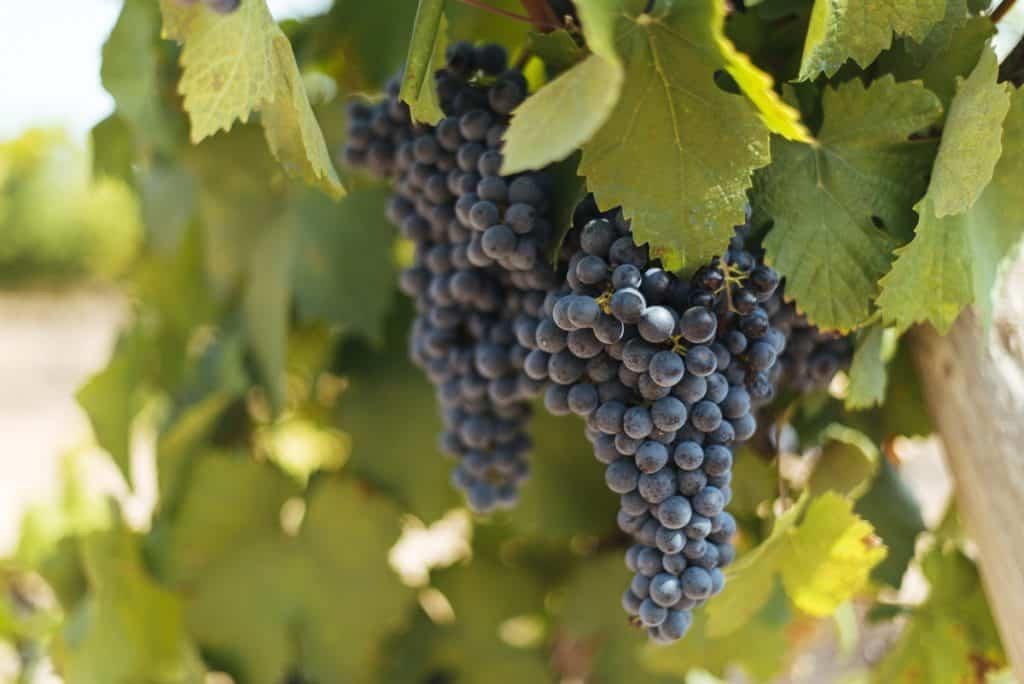
Popular Spanish Wine Varieties
Here is a comprehensive guide to all the Spanish wine varieties currently available on the market. Browse through this list to discover which Spanish wine variety best matches your taste preferences and desires. This resource will help you explore the rich diversity of flavors offered by Spain's renowned wine regions.
Complete list of Spanish Wine Varieties:
-
Aguardiente – A strong transparent spirit distilled from
vegetables, called “Firewater”, drunk as a digestif after a heavy
meal to aid digestion
-
Albariza – The famous sparkling white soils of Jerez Sherry
country, characterized by its high limestone content.
-
Albariño – Fresh, crisp white wine from the Rias Baixas appellation
of Galicia. It’s also the name of the primary grape in these
elegant wines.
-
Alella – The smallest D.O. in Spain, located just north of
Barcelona. Known for fresh crisp white wines and excellent Canvas.
Top names are Carmenet and Marques de Alella.
-
Amargo – Bitter
-
Amontillado – A type of Sherry or Montilla, aged and amber colored
with a nutty flavor
-
Barrica – The classic 225-liter oak barrel used to age wine, made
from French or American oak.
-
Bodega – Means “Winery”, “Cellar”, and confusingly, even “Wine Bar”
-
Bodeguero – The winery owner/manager
-
Capataz – A master wine taster in Jerez Sherry country
-
Cava – A sparkling wine, usually from Penedés (with Xarel.lo,
Parellada and Macabeu grapes) made in accordance with the Methode
Champenois and aged at least nine months. There is a Gran Reserva
qualification for aged Cavas of the Penedés
-
Cepa – Grape Varietal
-
Cosecha – Vintage, harvest
-
Deguelle – The disgorging process used for sparkling wines. Called
“Degorgement” in French.
-
Dorado – a fortified wine made in the Rueda region with the Verdejo
grape.
-
Dulce – sweet
-
Enologia – Winemaking
-
Espeso – Heavy (“thick”), weighty wine
-
Espumosa – Sparkling
-
Fino – A type of sherry or Montilla, young, salty, tasting of the
sea
-
Galicia – Coastal region in Northwest Spain famous for seafood, dry
white Albariño based wines and it’s the Celtic culture
-
Garnacha– Grenache grape varietal
-
Garnatxa d’Emporda – A sweet dessert wine made in the Ampurdan,
Costa Brava (north of Barcelona)
-
Generoso – A fortified aperitif or dessert wine
-
Jerez de la Frontera – The principal Sherry wine town, located in
southwest Spain in the province of Cádiz.
-
Jumilla – Area in Murcia known for robust red wines whose best
wines are made with the Monastrell and Petit Verdot grapes.
L’Ermita is a great winery.
-
Manzanilla – Very dry sherry style wine, Manzanilla only comes from
the town of Sanlucar de Barrameda, part of the Sherry Triangle.
-
Moscatel – Sweet dessert wine, excellent Moscatels are made in the
Alicante region
-
Navarra – Wine region located just east of La Rioja. Traditionally
famous for Rosado wines, now more and more for international
blends. Top names are Ochoa and Chivite.
-
Oloroso – Dark, rich aged sherry
-
Orujo – Typical digestif from Galicia. Similar to Aguardiente, it
can be “white” (clear and strong) or flavored with honey or herbs)
-
Pacharán – Sloeberry liqueur from Navarra/ Basque country.
-
Pago – single vineyard, Château style estate bottled wine
-
Priorat – the most exciting wine region in Spain at the moment,
with serious winemakers such as Rene Barbier, Alvaro Palacios and
Carles Pastrana making an international name for these prestigious
wines. Located in Tarragona province, eastern Spain.
-
Rioja – La Rioja is Spain’s most famous wine region, whose DO was
established in the 1920s, but whose wineries were founded in the
1800s. Mainly red, oaky wines.
-
Roble – Oak
-
Rueda – the region for good value and great quality white wine in
Spain. Fresh fruity whites are made with native Verdejo grape and
often blended with Sauvignon Blanc











